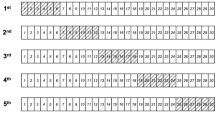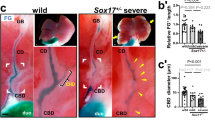Abstract
Summary: Intrauterine ligation of the common bile duct was carried out in ten fetal lambs at approximately 80 days gestational age. Six of the fetal lambs survived until term and were sacrificed at varying periods until the 36th day of life. The lesion which developed resembled a “correctable” type of extrahepatic biliary atresia [Kasai type 1 (b)]. The lining epithelium was either totally or incompletely denuded in the blind end of the common duct proximal to the obstruction.
Speculation: The compliance of the wall of the common bile duct would appear to vary with the age at which an obstruction is introduced. The finding of an incomplete epithelial lining in the blind bulbous end of the proximal common duct may be of practical importance in influencing the siting of a biliary-intestinal anastomosis in the operative correction of the clinical condition. The failure to achieve mucosa-to-mucosa apposition may predispose towards anastomotic stenosis with all its sequelae. The findings in this small preliminary study are of sufficient interest to warrant further investigation.
Similar content being viewed by others
Log in or create a free account to read this content
Gain free access to this article, as well as selected content from this journal and more on nature.com
or
Author information
Authors and Affiliations
Rights and permissions
About this article
Cite this article
Spitz, L. Ligation of the Common Bile Duct in the Fetal Lamb: an Experimental Model for the Study of Biliary Atresia. Pediatr Res 14, 740–748 (1980). https://doi.org/10.1203/00006450-198005000-00007
Issue date:
DOI: https://doi.org/10.1203/00006450-198005000-00007
Keywords
This article is cited by
-
Relationships of serum MMP-7 and clinical characteristics in choledochal cyst children
BMC Surgery (2024)
-
Choledochal cyst
Pediatric Surgery International (2023)
-
Animal models of pediatric surgical diseases
Pediatric Surgery International (1994)
-
Neonatal obstructive cholangiopathy
The Indian Journal of Pediatrics (1984)



